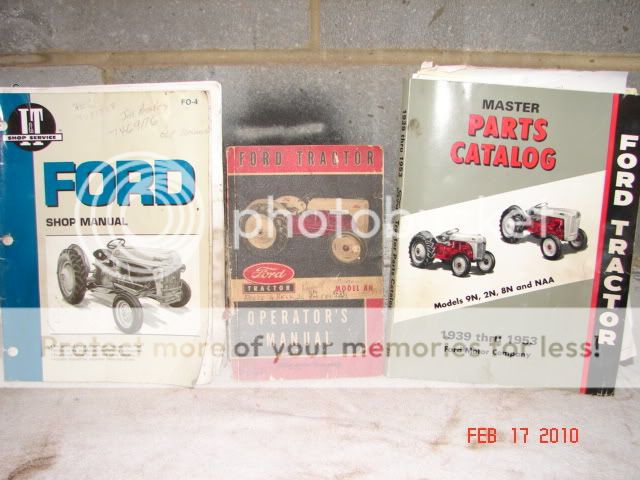Ed Douville
New User
Hey everyone! This is my first posting on this. Hopefully someone can help me and my friend out.
A friend of mine has a 1947 9N tractor, the number on the engine is 9N273410 J86. I have NEVER worked on a tractor before until now and I was trained to work on motorcycles. This is the first vehicle I have worked on in 2 years since graduating from MMI.
I was told he had no spark, but I found out it did in fact have spark, but just wouldn't run. With the help of his father, who knows a little more about tractors, we cleaned out the fuel filter and carb thoroughly. It still was having trouble running. We looked at the distributor (first time ever dealing with one) and we found out that the condenser was never connected from the last person who worked on it.
Hooked it up and the tractor runs great...or at least it did....
Now the issue is it has a very hard time starting. The only way it seems to start is if we open up the distributor and spray contact cleaner and wipe it down. It's been the same situation with his Massey Harris. Only way they will start.
My thinking is maybe condensation is somehow getting inside the distributors and not allowing them to operate correctly.
Can someone help me out please? I'm slowly learning about tractors and it's fascinating and lots of fun!
Thanks again!
A friend of mine has a 1947 9N tractor, the number on the engine is 9N273410 J86. I have NEVER worked on a tractor before until now and I was trained to work on motorcycles. This is the first vehicle I have worked on in 2 years since graduating from MMI.
I was told he had no spark, but I found out it did in fact have spark, but just wouldn't run. With the help of his father, who knows a little more about tractors, we cleaned out the fuel filter and carb thoroughly. It still was having trouble running. We looked at the distributor (first time ever dealing with one) and we found out that the condenser was never connected from the last person who worked on it.
Hooked it up and the tractor runs great...or at least it did....
Now the issue is it has a very hard time starting. The only way it seems to start is if we open up the distributor and spray contact cleaner and wipe it down. It's been the same situation with his Massey Harris. Only way they will start.
My thinking is maybe condensation is somehow getting inside the distributors and not allowing them to operate correctly.
Can someone help me out please? I'm slowly learning about tractors and it's fascinating and lots of fun!
Thanks again!



